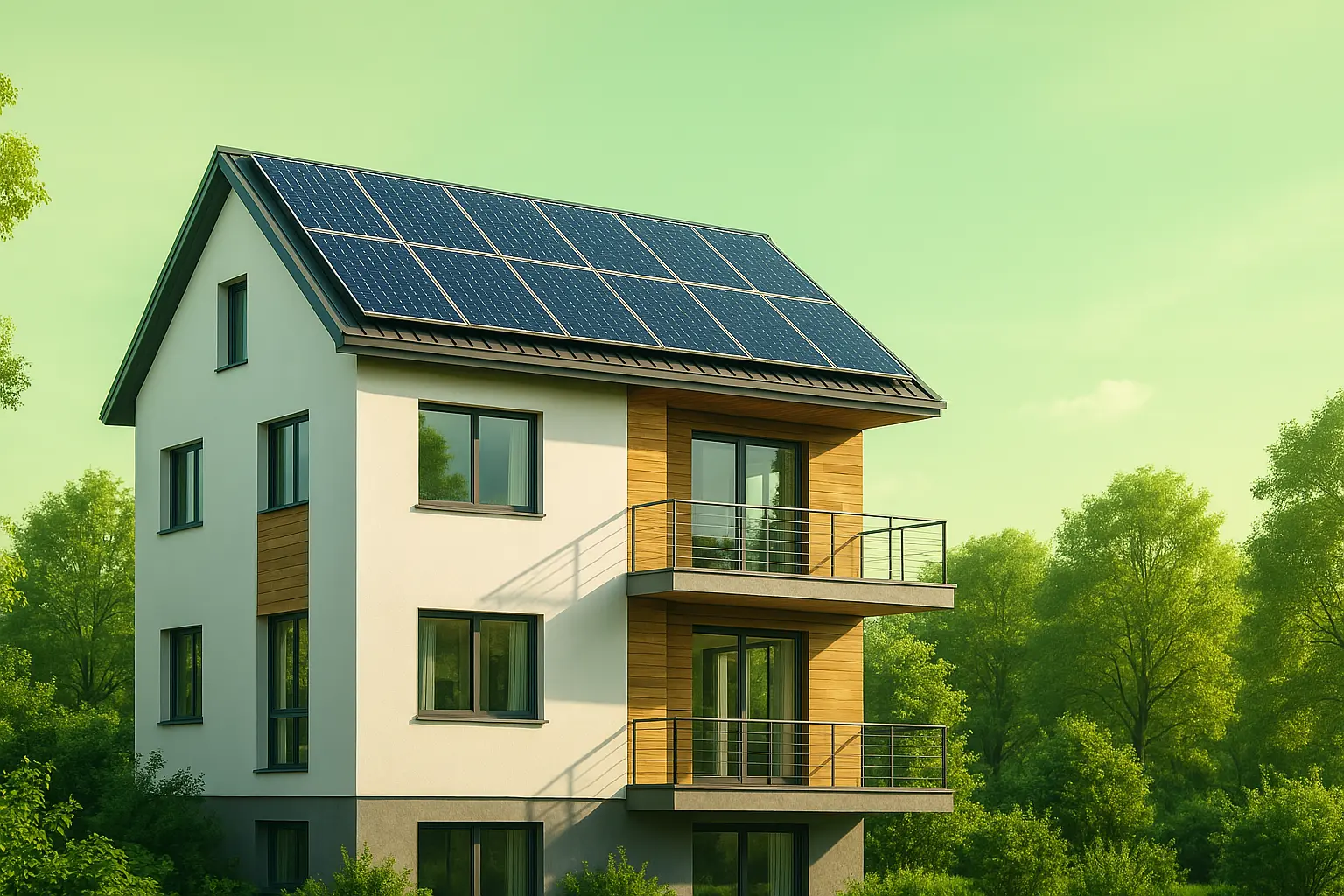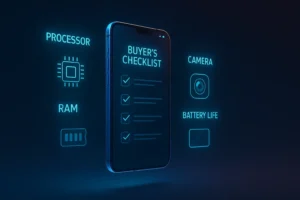Introduction
Solar energy has emerged as one of the most viable renewable energy sources, providing an eco-friendly and cost-effective solution to energy needs. With rising electricity costs and increasing environmental concerns, many homeowners and businesses are turning to solar power. However, choosing between an on-grid and off-grid solar system can be challenging. This guide will provide an in-depth understanding of both systems, their benefits, components, costs, and considerations before installation.
Understanding On-Grid and Off-Grid Solar Systems
On-Grid Solar Systems
An on-grid solar system is connected to the public electricity grid. It allows users to consume solar energy while still having access to the grid when needed. Any excess energy produced is sent back to the grid, often in exchange for credits through net metering.
Key Features of On-Grid Systems:
- Requires a connection to the local utility grid.
- Does not include battery storage (unless hybrid models are used).
- Excess electricity can be sold back to the grid.
- Stops working during power outages unless paired with a battery backup.
- Typically lower cost compared to off-grid systems due to the absence of batteries.
Off-Grid Solar Systems
An off-grid solar system operates independently of the electricity grid. It relies on solar panels, battery storage, and an inverter to generate and store electricity for later use.
Key Features of Off-Grid Systems:
- Not connected to the electricity grid.
- Requires battery storage to store excess energy.
- Suitable for remote locations with no grid access.
- Requires a backup generator for cloudy days or higher demand.
- More expensive due to the cost of batteries and backup systems.
Types of Solar Panels
Choosing the right type of solar panel is crucial for efficiency, durability, and cost-effectiveness. The main types of solar panels include:
1. Monocrystalline Solar Panels
- Made from a single continuous crystal structure.
- Advantages: High efficiency (15-22%), long lifespan, better performance in low-light conditions.
- Disadvantages: Higher cost compared to other types.
2. Polycrystalline Solar Panels
- Made from multiple silicon crystal fragments melted together.
- Advantages: More affordable than monocrystalline panels.
- Disadvantages: Slightly lower efficiency (13-18%), requires more space.
3. Thin-Film Solar Panels
- Made by layering photovoltaic materials onto a substrate.
- Advantages: Lightweight, flexible, works well in low-light conditions.
- Disadvantages: Lower efficiency (10-12%), shorter lifespan.
4. Bifacial Solar Panels
- Absorbs sunlight from both the front and back sides, increasing energy production.
- Advantages: Higher energy yield, better performance in reflective environments.
- Disadvantages: Higher cost, requires optimal mounting conditions.
5. Passivated Emitter and Rear Cell (PERC) Panels
- Enhanced monocrystalline panels with a passivation layer that increases efficiency.
- Advantages: Higher efficiency than traditional monocrystalline panels.
- Disadvantages: More expensive.
Components of a Solar System
Both on-grid and off-grid solar systems have similar core components, but off-grid systems require additional storage components.
1. Solar Panels
Solar panels convert sunlight into direct current (DC) electricity. They come in different types:
- Monocrystalline Panels: High efficiency, longer lifespan, and better performance in low-light conditions.
- Polycrystalline Panels: More affordable but slightly less efficient than monocrystalline.
- Thin-Film Panels: Lightweight and flexible but lower efficiency.
- Bifacial Panels: Can absorb sunlight from both sides for higher efficiency.
- PERC Panels: Enhanced monocrystalline panels for improved efficiency.
2. Solar Inverter
The inverter converts DC electricity from solar panels into alternating current (AC) electricity, which can be used by household appliances. There are three main types:
- String Inverters: Cost-effective and commonly used in on-grid systems.
- Microinverters: More expensive but provide better performance by optimizing each panel individually.
- Hybrid Inverters: Used for systems with battery storage, allowing grid connection and energy storage.
3. Battery Storage (For Off-Grid Systems)
Batteries store excess energy generated during the day for use at night or during cloudy periods. Common types include:
- Lead-Acid Batteries: Affordable but lower lifespan and efficiency.
- Lithium-Ion Batteries: Higher efficiency, longer lifespan, but more expensive.
- Flow Batteries: Expensive but offer long-term durability and deep discharge capabilities.
4. Charge Controller (For Off-Grid Systems)
A charge controller regulates the voltage and current going into the battery to prevent overcharging or deep discharge.
5. Net Meter (For On-Grid Systems)
A net meter measures the electricity sent to and received from the grid, allowing users to receive credits for surplus power generation.
6. Backup Generator (Optional for Off-Grid Systems)
A generator provides additional backup power during prolonged cloudy days or high energy demand.
Installation Considerations
1. Energy Needs Assessment
Determine the household or business’s daily energy consumption in kilowatt-hours (kWh). This helps in selecting the appropriate solar panel capacity and battery size (for off-grid systems).
2. Location and Sunlight Availability
Analyze the geographical location and sunlight exposure. Regions with high solar irradiance will generate more energy efficiently.
3. Roof Condition and Space
Ensure that the roof can support the weight of solar panels and is free from obstructions like trees or buildings that cast shadows.
4. Budget and Financial Incentives
Consider initial installation costs, potential savings, government incentives, and available financing options.
5. Maintenance and Longevity
Solar systems require minimal maintenance, but occasional cleaning and system checks are essential to ensure efficiency and longevity.
Pros and Cons of On-Grid vs. Off-Grid Systems
| Feature | On-Grid System | Off-Grid System |
|---|---|---|
| Connection | Connected to grid | Independent from grid |
| Battery Requirement | No (unless hybrid) | Yes |
| Net Metering | Available | Not applicable |
| Power During Outages | No (unless hybrid) | Yes |
| Initial Cost | Lower | Higher due to batteries |
| Maintenance | Lower | Higher due to battery upkeep |
| Ideal Use Case | Urban areas with grid access | Remote areas without grid access |
Cost Comparison
On-Grid System Cost Breakdown
- Solar Panels: $5,000 – $15,000
- Inverter: $1,000 – $3,000
- Installation & Wiring: $2,000 – $5,000
- Miscellaneous Costs: $1,000 – $3,000
- Total Estimated Cost: $8,000 – $26,000
Off-Grid System Cost Breakdown
- Solar Panels: $5,000 – $15,000
- Inverter: $2,000 – $5,000
- Batteries: $5,000 – $20,000
- Charge Controller: $500 – $2,000
- Installation & Wiring: $3,000 – $7,000
- Backup Generator: $3,000 – $7,000 (optional)
- Total Estimated Cost: $15,500 – $56,000
Conclusion: Which System is Right for You?
The choice between an on-grid and off-grid solar system depends on individual needs, location, and budget:
- Choose an On-Grid System if you live in an area with reliable grid access, want lower upfront costs, and wish to benefit from net metering.
- Choose an Off-Grid System if you live in a remote location without grid access, want complete energy independence, and can afford higher upfront costs.
Ultimately, solar energy is a sustainable and smart investment, reducing electricity bills and carbon footprints while providing energy security. Conduct thorough research, consult professionals, and choose a system that best fits your requirements.



Really enjoyed this! Your writing style is so engaging.
This gave me a lot to think about—thank you for sharing your thoughts!
Clear, concise, and super helpful. Great job!”
Always a pleasure reading your blog. Keep the great content coming!
Thanks for the great read! Very informative and well-written.
Really helpful content — I learned a lot from this!
Great post! I really enjoyed reading this. Your insights were clear and helpful — thanks for sharing!
only a few survived.
Really helpful content – thanks for putting this together!
This was a great read! I learned something new today.
monuments related to deep
From many manuscripts of Antiquity
Loved your perspective on this topic. Keep it up!
Thanks for the valuable insights. Looking forward to your next post!